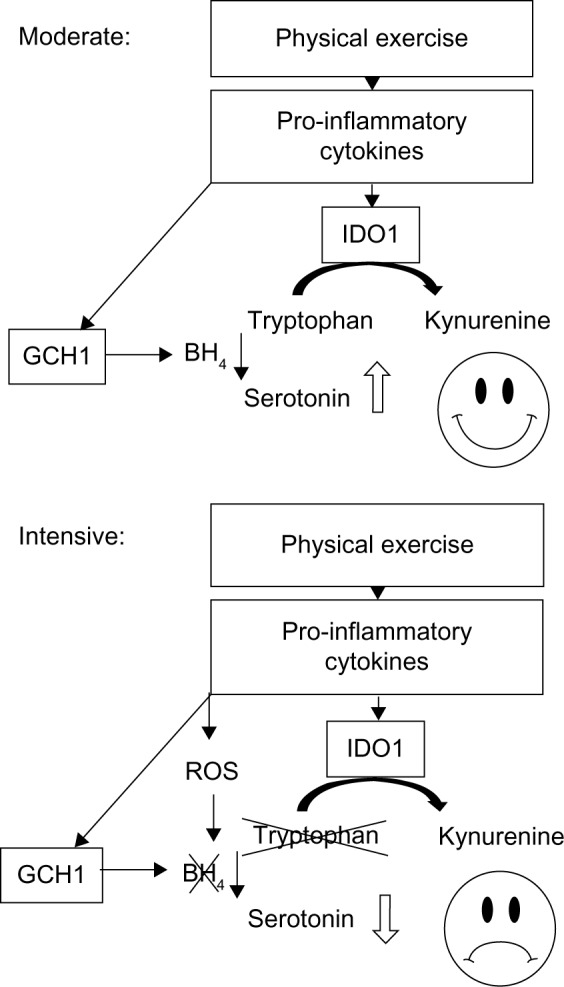Figure 2.

Hypothesis of the impact of moderate (upper graph) versus intensive (lower graph) physical exercise on the breakdown of tryptophan and the production of 5-hydroxytryptamine (serotonin) in a healthy individual: Physical exercise evokes a proinflammatory immune response, which is associated with induction of IDO1. In parallel, GCH1 is activated, which leads to the production of BH4, the necessary cofactor of several amino acid hydroxylases, including tryptophan 5-hydroxylase. In the moderate situation (upper graph), the increase in BH4 is able to compensate for a possible loss of tryptophan due to IDO1 activity, increased serotonin availability will enhance mood. However, in the situation after prolonged or heavy (= intensive) exercise (lower graph), this is no longer true. High level production of ROS can reduce the life span of BH4, and athletes may be faced to insufficient supply with serotonin and low mood.
